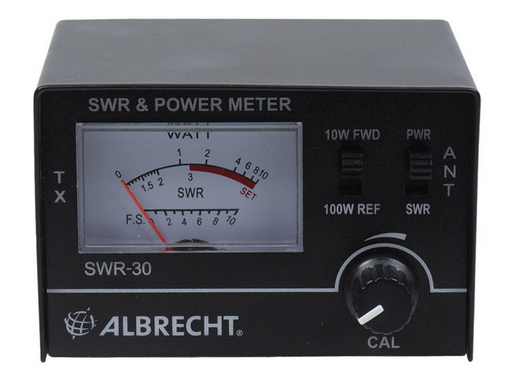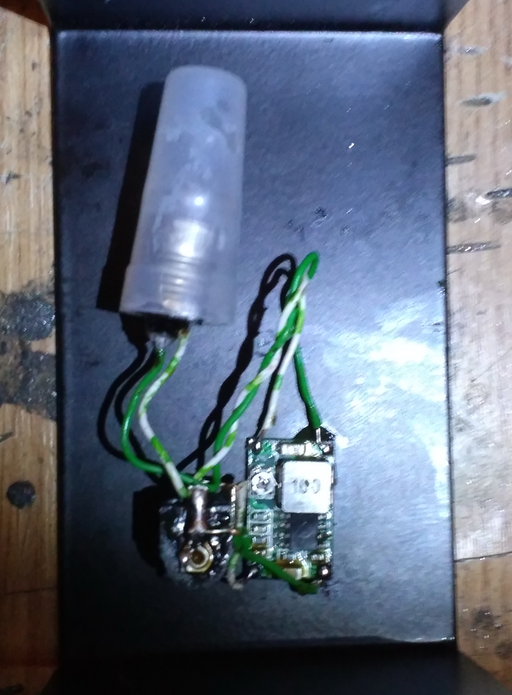Table of Contents
About
The Albrecht SWR 30 is a very compact device that is capable of measuring both power output and SWR.
The only feature lacking that really could have been added is a backlight to the dial such that measurements can be carried out in low light conditions. The easiest and perhaps the most in-theme option to add a backlight to the Albrecht SWR 30 is to add a low voltage classic tungsten light bulb on the inside of the case such that the light inside the box can be dissipated and pass through the semi-transparent parts of the dial.
Requirements
- Tungsten lightbulb, ideally 12V to match the car battery power output, or:
- a lightbulb with lower voltage and a stepdown converter
- Power jack.
- Dremel and soldering equipment.
Design
A hole is drilled on top of the Albrecht in order to fit a power jack - the reason for this is that the front and back PCBs inside the device are fastened to the metal plates such that the only option for fitting a power jack is to drill a hole on top. Once the hole is drilled the power jack is superglued in-place whilst making sure that the power jack fits properly.
In this case only a  tungsten light bulb was available such that a stepdown converter was needed. Alternatively, two
tungsten light bulb was available such that a stepdown converter was needed. Alternatively, two  (or
(or  ) resistors could have been used as a voltage divider but, as it turned out, the resistors and proper fastening jacks for the leads would have yielded a much bulkier circuitry such that a pre-made stepdown converter was used instead.
) resistors could have been used as a voltage divider but, as it turned out, the resistors and proper fastening jacks for the leads would have yielded a much bulkier circuitry such that a pre-made stepdown converter was used instead.
The stepdown converter is fastened to the metal upper plate using some 3M double-sided sticky tape such that it can be removed and reused at a later date if so necessary.
The light bulb itself in this particular case was rated at  and the stepdown converter (a variable buck stepdown converter) was set to output about
and the stepdown converter (a variable buck stepdown converter) was set to output about  thereby slightly "overclocking" the light bulb for a brighter light. A small heat-resisting plastic cap is added over the light bulb in order to prevent the light bulb from melting other components inside the Albrecht.
thereby slightly "overclocking" the light bulb for a brighter light. A small heat-resisting plastic cap is added over the light bulb in order to prevent the light bulb from melting other components inside the Albrecht.
Results
Further Possible Developments
A small SPDT switch could be used to turn the backlight on and off in order to reduce consumption when the backlight is not needed.
Perhaps a better option would be to use a transistor switch fed from the antenna itself such that the light bulb would only turn on when the antenna is used for transmitting. In this case, a BJT transistor would be needed that activates the junction whenever a relatively low voltage passes through instead of the regular 
2N3904 BJT used for IoT digital signals.
For the contact, copyright, license, warranty and privacy terms for the usage of this website please see the contact, license, privacy, copyright.






